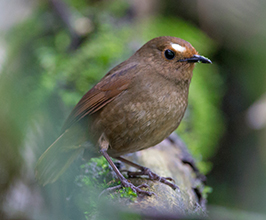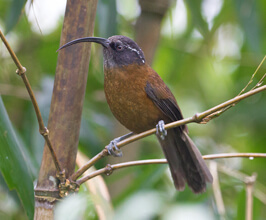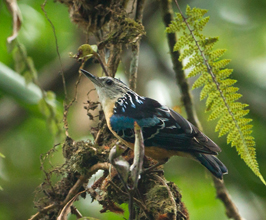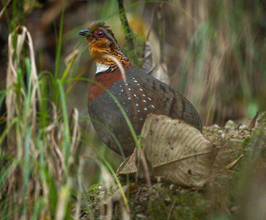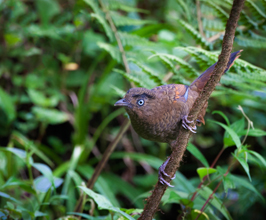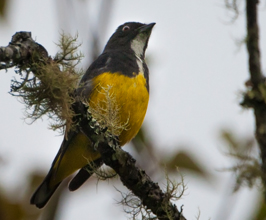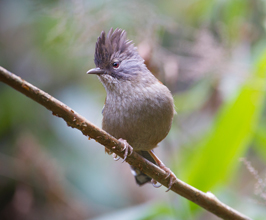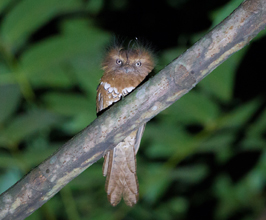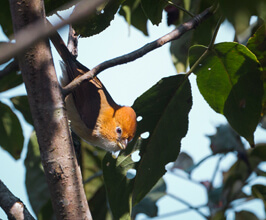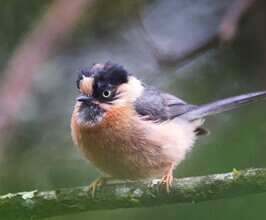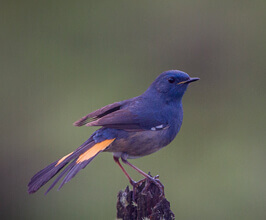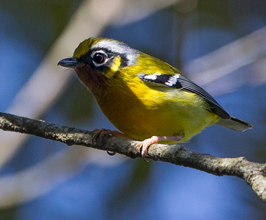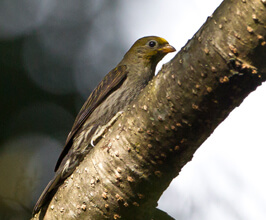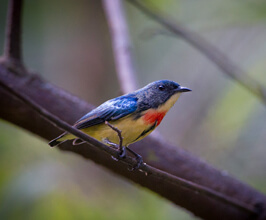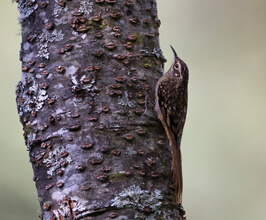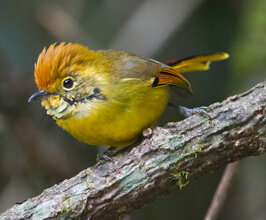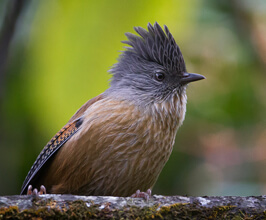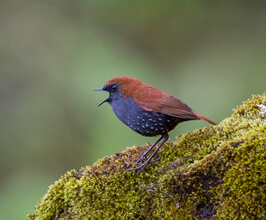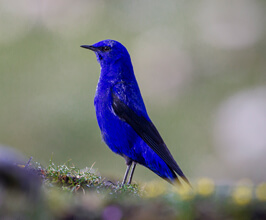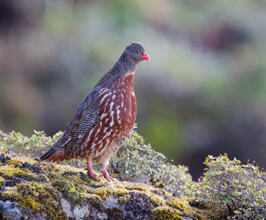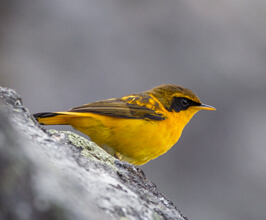Delhi – Dibrugarh – Mishmi Hills - Mayodia Pass - Roing - Maguri Beel – Tinsukia – Digboi - Patkai & Jeypore - Kohima - Chizami – Khonoma
15 Days / 14 Nights
Our Arunachal, Assam and Nagaland Birding Tour dovetails three ace birding destinations of India in a single birdwatching adventure. Put together, the bird count and avifauna diversity of these three North-Eastern states is unrivalled throughout the Indian subcontinent. More Info
Booked as per
request.
Included except arrival and departure city.

Private guide for complete tour.
Airport to Airport.
2-8PAX
Included
Our Arunachal, Assam and Nagaland Birding Tour dovetails three ace birding destinations of India in a single birdwatching adventure.
Put together, the bird count and avifauna diversity of these three North-Eastern states is unrivalled throughout the Indian subcontinent. More than two-third of around 1300 bird species found in India can be seen in the hills, forests, grasslands, wetlands, lakes and rivers of Arunachal, Assam and Nagaland. Many of these winged beauties are rare and exotic. Some of them, once endangered, are now success stories of conservation. Almost all of them are worth going after.
The checklist of the birds of Northeast India is quite long and it takes dedicated birding of at least two weeks to tick off a good many names and species. Our birding tour of Arunachal, Assam and Nagaland spans 15 days and covers one state at a time.
We start off with Arunachal Pradesh and focus on the birding trails located at different altitudes. We scour about the lower regions of Mishmi hills (400 meters) and move up to the birding sites around Tiwari Gaon (1300 m) and top it with birdwatching at Mayodia Pass (2655 m). For five consecutive days, we probe these birding hotspots of Arunachal Pradesh and look for the likes of Spot-breasted Babbler, White-bellied Erpornis, Blyth’s Leaf Warbler, Blue-winged Minla, Small Niltava, Ashy Bulbul, Striated Yuhina, Black Bulbul, Nepal Fulvetta, White-naped Yuhina, Whiskered Yuhina, Cachar Wedge-billed Wren Babbler, Mishmi Wren Babbler, Purple Cochua, Hill Partridge, Rufous-throated Partridge, Yellow-rumped Honeyguide, Chestnut-crowned Warbler, Hodgson’s Frogmouth and, of course, the state bird of Arunachal Pradesh, the Great Hornbill, apart from many others. On the side, we may even catch sight of the Leopard Cat around Mayodia Pass.
The second leg of our Northeast India birding expedition takes us to Assam and puts us amidst flocks of aquatic birds at a wetland called Maguri Beel, which is designated by BirdLife International as an Important Birding Area (IBA). Chief avian attractions here include Bar-headed Goose, Cotton Pygmy-Goose, Garganey, Northern Shoveler, Gadwall, Falcated Duck, Eurasian Wigeon, Northern Pintail, Ferruginous Duck, Tufted Duck, Little Grebe, Baillon's Crake and Lesser Adjutant.
We then commit a whole day of birding to the lowland rainforests of Digboi, followed by two busy back-to-back days of birdwatching at Dehing Patkai Wildlife Sanctuary and Jeypore forest range, looking for the likes of Large Scimitar Babbler, Sultan Tit, Red-headed Trogon, Lesser and Greater Necklaced & Rufous-necked Laughingthrushes, Pale-capped Pigeon, Violet and Emerald Cuckoo, Silver-bellied and Long-tailed Broadbill and scores of other interesting bird species and wildlife.
The final leg of our Northeast India birding adventure focusses on the mountainous state of Nagaland, also called the ‘falcon capital of the world’ because of the large number of Amur Falcons that roost here every migratory season. The highlight of our birding tour of Nagaland is the Khonoma Nature Conservation and Wildlife Sanctuary, which has, over the years, become a thriving habitat of a large number of bird species due to a strict hunting ban and rigorous conservation measures. Seasoned birders throng to Khonoma every year for prized sights of avian specialties like Brown-capped laughingthrush, Naga Wren Babbler, Spot-breasted Scimitar-Babbler, Streak-breasted Scimitar-babbler, Striped Laughingthrushes, Spot-breasted Laughingthrush, Flavescent Bulbul, Chestnut-vented Nuthatch and, of course, the state bird, Blyth's Tragopan.
Our 15-day birding adventure of Arunachal, Assam and Nagaland has almost 11 full and 3 half days of birdwatching. Even when we commute from one birding location to another, we stop on the way for short birding stints at the sites we have singled out in our itinerary. These birding trails have been chosen after years of birding in Northeast India, and they are known to yield best sightings.
Our Arunachal, Assam and Nagaland birding trip is highly recommended to the passionate and tireless birder who wants more and more out of an India birding holiday.
Lodging: Over the course of 15 days, our birding trip of Arunachal, Assam and Nagaland takes us to birding destinations that are mostly far from urban centres. We put you up in hotels and resorts wherever they are available. But some sites are so remote that basic accommodation is the best available there. At such locations, we overnight at guest houses or homestays, which give us a good chance to connect with the local people as well. The best thing about this type of accommodation is their scenic location and closeness to the birding sites.
Meals: Both Indian and western meals are on the menu of the hotels and resorts we stay in. But at remote locations where cooking ingredients may be limited, we serve local delicacies made either by the cooks at Homestays or our kitchen staff. Best hygienic practices are adhered to in kitchen, and more often than not, the meals are mouth-wateringly delicious. At almost all times, you have the option of choosing between vegetarian and meat-based meals.
Tour Difficulty: Our Arunachal, Assam and Nagaland birdwatching adventure covers birding trails at different altitudes and terrains. Birding at Mishmi Hills and Mayodia Pass in Arunachal Pradesh may require long hikes up some mountainous slopes. The Assam leg of the tour is relatively easier, but Nagaland, being mostly a hilly state, will demand some level of physical fitness and strength from you. You should be fit enough to do daylong birding at different elevations while carrying your equipment such as binoculars, camera, field guide and backpack.
Tour Extension: Even as you go out chasing birds on our birdwatching tour of Arunachal, Assam and Nagaland, there’s plenty to do on the side. You may want to see the great one-horned rhinoceroses and a lot of other wildlife at Kaziranga National Park in Assam. You may want a holiday package to Shillong, the capital of Meghalaya. Or you may simply wish to visit places of interest close to the birding sites in our itinerary. Whatever be the case, do inform us in advance regarding the tour extension you would like, and we will make it happen for you.
Climate: The winter season from October to mid-May is the best time to do our Northeast birding trip of Arunachal, Assam and Nagaland. Arunachal, being in the foothills of the Himalayas, is the coldest of the three states, followed by Assam and Nagaland. Temperature at the higher altitudes of Mishmi Hills may be close to zero at times. In Assam, it hovers around 6-8 degrees while Nagaland can be cold at 4 degrees, but mercury can at times even touch double digits. Do carry your winter clothes, a quality raincoat and light summer wear as well.
Our representative receives you in Delhi and drives you to a pre-booked hotel. After a brief period of rest or lunch, we take you out for birding at Okhla Bird Sanctuary along the bank of the Yamuna river. The sanctuary is a thriving habitat of birds, and as many as 300 avian species have been spotted here.
Our birding target for the day includes Eurasian Collared-Dove, Laughing Dove, Yellow-Footed Green-Pigeon, Greater Coucal, Asian Koel, Grey-headed Swamphen, White-breasted Waterhen, Black-winged Stilt, Red-wattled Lapwing, Pheasant-tailed Jacana, Temminck's Stint, Wood Sandpiper, Whiskered Tern, Oriental Darter, Great Cormorant, Indian Cormorant, Grey Heron, Cattle Egret, Indian Pond-Heron, Black-headed Ibis, Black Kite, Spotted Owlet, Indian Grey Hornbill, Common Kingfisher, Green Bee-eater, Brown-headed Barbet, Rose-ringed Parakeet, Black Drongo, Long-tailed Shrike, Ashy Prinia, Plain Prinia, Sykes's Warbler, Clamorous Reed Warbler, Plain Martin, Red-whiskered Bulbul, Indian White-eye, Striated Babbler, Rosy Starling, Bank Myna, India Robin, Oriental Magpie-Robin, Bluethroat, Pied Bushchat, Citrine Wagtail, Paddyfield Pipit, and Red-headed Bunting.
After a busy day of birding in Delhi, we retire to our hotel for dinner and overnight.
We transfer you to Delhi airport for an early morning flight to Dibrugarh, a city surrounded by tea estates in Assam. Our representative receives you at the Dibrugarh airport and drives you to a town named Roing in Arunachal Pradesh. It’s a 150-km drive and usually takes 3 to 4 hours, but we make many stops along the way to do birding around some selected spots where we’re most likely to see some interesting species. The drive is smooth and takes us through scenic locations of Northeast India.
Roing is a small town situated at the foothills of Mishmi Hills. For someone travelling eastward along the length of Arunachal Pradesh, it is the last major town to India’s north-eastern border with China. From the birding point of view, Roing is a good place to start our birding tour of Arunachal Pradesh.
True to the spirit of an indefatigable birder, we waste little time in stepping out for a short birding excursion in and around Roing after our arrival in the evening. Dinner and overnight at the hotel or resort in Roing.
The subtropical evergreen forest of Mishmi Hills receives heavy rainfall every year and is a notable biodiversity hotspot for nature lovers to explore. We dedicate the whole day to birding in the lower areas of Mishmi Hills. There is an excellent birding trail that stretches up to a place called Tiwari Gaon. We drive up this trail and make regular stops to birdwatch.
Our targets for the day include Spot-breasted Babbler, White-bellied Erpornis, Blyth’s Leaf Warbler, Blue-winged Minla, Small Niltava, Ashy Bulbul, Striated Yuhina, Black Bulbul, Nepal Fulvetta, White-naped Yuhina, Whiskered Yuhina, Pygmy Cupwing, Streaked Spiderhunter, White-capped Redstart, Black-throated Sunbird, Collared Treepie, Scarlet Minivet, White-crested Laughingthrush, Long-tailed Sibia, Rufous-necked Laughingthrush, Yellow-bellied Warbler, Vivid Niltava, Pigmy Wren Babbler, Scaly Wren Babbler, Green Cochua, Large Blue Flycatcher, White-gorgeted Flycatcher, Fulvous-breasted Woodpecker, Great Barbet, Golden-throated Barbet, Large Hawk Cuckoo, Wedge-tailed Green Pigeon, Mountain Hawk Eagle, Maroon Oriole, Grey-chinned Minivet, Lesser Shortwing, White-tailed Robin, Beautiful Nuthatch, Fire-capped Tit, Yellow-cheeked Tit, Sultan Tit, Black-throated Tit, Striated Bulbul, Ashy Bulbul, Black Bulbul, Brownish-flanked Bush Warbler, Mountain Tailorbird, Blyth’s Leaf Warbler, Grey-hooded Warbler, Grey-cheeked Warbler, Lesser-necklaced Laughingthrush, Striated Laughingthrush, Blue-winged Laughingthrush, Red-faced Liocichla , Rusty-throated Wren Babbler, Pale-Headed Woodpecker and many more.
We wrap up the day’s birding at Mishmi Hills by looking for Hodgson’s Frogmouth in the evening. Later, we drive back to our hotel or resort in Roing for dinner and overnight.
After an early breakfast, we leave Roing for a 40-km drive to Mayodia Pass, which is a popular tourist destination, particularly in the winters owing to its altitude of 2655 meters which gives stunning views of surrounding snow-capped peaks. Apart from scenic beauty, Mayodia is known as a bustling habitat for birds. Birders often tread the areas around Mayodia Pass for some special and rare avian sights.
We do the day’s birding along the road to Mayodia Pass. We look out for the likes of Cachar Wedge-billed Wren Babbler, Mishmi Wren Babbler, Purple Cochua, Hill Partridge, Rufous-throated Partridge, Yellow-rumped Honeyguide, Chestnut-crowned Warbler, Black-faced Warbler, Red-faced Liocichla, Long-billed Wren Babbler, Eyebrowed Wren Babbler, White-browed Shrike Babbler, Black-eared Shrike Babbler, Blyth Tragopan, Rufous-capped Babbler, Golden Babbler, Silver-eared Mesia, Red-billed Leiothrix, Cutia, Rusty-fronted Barwing, Rufous-winged Fulvetta, White-naped Yuhina, Rufous-vented Yuhina, White-bellied Yuhina, Beautiful Sibia, Long-tailed Sibia, Fire-breasted Flowerpecker, Scarlet-backed Flowerpecker, Black-throated Sunbird, Fire-tailed Sunbird, and Streaked Spiderhunter among many others.
The day’s birding ends with our arrival at Mayodia Pass. We check in at Coffee House for snacks, dinner and overnight.
There are several birding trails around Mayodia Pass that are worth exploring. A stroll deeper into the lower forests reveals a fascinating variety of bird species. The bamboo brakes that grow in profusion along the road surprise you with wonderful kind of birds. We head out to explore these birding sites right after breakfast.
Perseverance in these bird habitats rewards you with sights of Scalater's Monal, Blyth's Tragopan, Fulvous Parrotbill, Fire-tailed Myzornis, Pale-Capped Pigeon, Ward’s Trogon, Dark-sided Thrush, White-crested and Blue-winged Laughingthrush, Green and Purple Cochoa, Rusty-Bellied and Gould’s Shortwing, Beautiful Nuthatch, Mishmi Wren-Babbler, Slender-billed Scimitar-Babbler, Manipur Fulvetta, Fire-Tailed Myzornis, Scarlet- and Grey-Headed Bullfinch, Mountain Scops Owl, Black-throated Parrotbill, Darjeeling Woodpecker, Grey-sided, Spotted and Black-faced Laughingthrushes, White-browed and Rusty-bellied Shortwing.
The region so abounds with birds that we can continue birding well into the night and seek out Mountain Scops Owl and Himalayan Wood Owl. We call it a day with a simple but tasty dinner at Mayodia Pass.
We leave the heights of Mayodia Pass and drive back down to the lower areas of Roing town, which sits at the moderate elevation of 390 meters. The birding trails around Roing have tremendous potential and we give them two full days of our birding adventure of Arunachal Pradesh.
Scouring the lower and middle altitude areas, we hope to see a wide variety of birds, including Red-headed Trogon, Large Hawk Cuckoo, Fork-tailed Swift, Collared Owlet, Asian Barred Owlet, Eagle/fish Owl, Barred Cuckoo Dove, Lesser Shortwing, Little Pied Flycatcher, Sultan Tit, Black-throated Tit, Striated Bulbul, Red-whiskered Bulbul , Ashy-throated Warbler, Yellow-browed Warbler, Blyth’s Leaf Warbler, Grey-hooded Warbler, Grey-cheeked Warbler, Grey-headed Parakeet, Chestnut-crowned Warbler, Black-faced Warbler, Red-faced Liocichla, Long-billed Wren Babbler, Eyebrowed Wren Babbler, Scaly-breasted Wren Babbler, Pygmy Wren Babbler, Bar-winged Wren Babbler, Grey-throated Babbler, Silver-eared Mesia, White-browed Shrike Babbler, Black-eared Shrike Babbler, Chestnut-tailed Minla, Yellow-throated Fulvetta, Brown-throated Fulvetta, Streak-throated Fulvetta, Nepal Fulvetta, Sparrowhawk , Oriental Honey Buzzard, Orange-bellied Leafbird, Yellow-billed Blue Magpie, Common Green Magpie, Grey Treepie and many others.
Moving on to the birding trails in Roing grasslands, we aim to sight the likes of Golden-headed Cisticola, Paddyfield Warbler, Striated Grassbird, Himalayan Black Bulbul, Blyth's Leaf Warbler, Jerdon's Babbler, Black-breasted Parrotbill, Grey-throated Babbler, Marsh Babbler, Striated Babbler, Great Myna, Chinese Rubythroat, Siberian Stonechat, Scaly-breasted Munia and Rare Swamp Prinia. After a busy day of birding at Roing, we return to our resort for dinner and overnight.
We move into the second leg of our Arunachal, Assam, Nagaland birding adventure. After an early morning birding session at Roing, we drive southward to a place called Maguri Beel in Assam. It’s a 3-hour drive and we may stop mid-way at some birding sites to catch sight of a few rare winged beauties. We reach Maguri Beel in the first half of the day to do birding till sundown.
Maguri Beel is a large wetland area next to Dibru Saikhowa National Park. The marshes and grasslands at Maguri Beel teem with such an incredible variety of birds that BirdLife International has declared it as an Important Birding Area (IBA). The wetland here abounds with the likes of Bar-headed Goose, Cotton Pygmy-Goose, Garganey, Northern Shoveler, Gadwall, Falcated Duck, Eurasian Wigeon, Northern Pintail, Ferruginous Duck, Tufted Duck, Little Grebe, Baillon's Crake, Northern Lapwing, Little-ringed Plover, Pheasant-tailed Jacana, Bronze-winged Jacana, Grey-headed Lapwing, Temminck's Stint, Eastern Spot-billed Duck, Common Snipe, Wood Sandpiper, Asian Openbill, Lesser Adjutant, Glossy Ibis, Eastern Marsh-Harrier, Pied Harrier, and Paddyfield Warbler.
The grasslands of Maguri Beel reveal a bunch of rare and exotic birds such as Black-breasted Parrotbill, Marsh Babbler, Jerdon’s Bushchat, Chestnut-capped Babbler, Jerdon's Babbler, Baikal Bush Warbler, Swamp Prinia, Swamp Francolin, Grey-sided Bush Warbler, Speckled Piculet, Striped Tit-Babbler, Pale-capped Pigeon, Red-necked Falcon, Pale-chinned Flycatcher, White-tailed Rubythroat, Spot-winged Starling, Pale-footed Bush Warbler, Japanese Bush Warbler, Black-breasted Chestnut-crowned Bush Warbler, Spotted Bush Warbler, Paddyfield Warbler, Clamorous Reed Warbler, Thick-billed Warbler, Smoky Warbler, Chestnut-capped Babbler, Jerdon's Babbler, Black-faced Bunting, Streaked Weaver, Yellow-breasted Bunting and several other avian curiosities.
To make the most of the day, we continue birding into the night and look out for Brown Hawk Owl, Oriental Scops Owl, and Long-eared Nightjar. With that, we conclude the maiden day of Assam birding tour. Dinner and overnight at a resort in Tinsukia.
Digboi is a town in eastern Assam known for its oil fields. It’s here the first oil well in Asia was drilled way back in the 19th century. But what’s not equally well known about Digboi is that it is a superlative bird haven. There’s plenty of birding prospects in the lowland forests and pools around the oil fields.
It’s these areas we explore after an hour’s ride from Tinsukia to Digboi in the morning. We seek out a wide variety of birds like White-winged Duck, White-cheeked Partridge, Chestnut-backed Laughingthrush, Grey Peacock Pheasant, Blue-bearded Bee-eater, Falcated Duck, Ferruginous Pochard, Bay Woodpecker, Wreathed Hornbill, Great Hornbill, Oriental Pied Hornbill, Red-headed Trogon, Stork-billed Kingfisher, Grey-headed Lapwing, Green-billed Malkoha, Pompadour Green Pigeon, Pin-tailed Green Pigeon, Green Imperial Pigeon, Daurian Redstart, Mountain Tailorbird, Besra, Mountain Hawk Eagle, Common Green Magpie, Grey Treepie, Collared Treepie, Black-winged Cuckooshrike, Lesser Racket-tailed Drongo, Large Woodshrike, Dark-sided Thrush, Black-breasted Thrush, Dusky Thrush, Rufous-gorgeted Flycatcher, Black-backed Forktail, Velvet-fronted Nuthatch, White-throated Bulbul, Ashy Bulbul, Grey-breasted Prinia, Chestnut-headed Tesia, Slaty-bellied Tesia, Grey-bellied Tesia, Brownish-flanked Bush Warbler, Tickell's Leaf Warbler, Greenish Warbler, Blyth's Leaf Warbler, Yellow-browed Warbler, Puff-throated Babbler, Pygmy Wren Babbler, Grey-throated Babbler, Striped-tit Babbler, White-hooded Babbler, Rufous-throated Fulvetta, Blyth's Pipit, and Olive-backed Pipit.
After a busy day of birding at Digboi, we retire to a nearby hotel for dinner and overnight.
India’s largest stretch of tropical lowland rainforests is found in Assam’s Dehing Patkai region which is so thick and diverse that it’s divided into three parts: Jeypore forest range, Upper Dehing West Block and Upper Dehing East Block. These forests are home to an incredible variety of birds and deserve at least two busy days of birding. During these two days, we focus on the birding trails at the Dehing Patkai Wildlife Sanctuary and Jeypore forest range.
Our avian targets during these excursions are Large Scimitar Babbler, Sultan Tit, Red-headed Trogon, Lesser and Greater Necklaced & Rufous-necked Laughingthrushes, Pale-capped Pigeon, Violet and Emerald Cuckoo, Silver-bellied and Long-tailed Broadbill, Pale Blue and Slaty Blue Flycatchers, Brown Hornbills, Streaked Spiderhunter, Rufous-throated Fulvetta, Dollar Bird, White-browed Piculet, Hodgson’s hawk Cuckoo, Yellow-vented Flowerpecker, Scarlet-backed Flowerpecker, Blue-throated Barbet, White-crowned Forktail, Red-winged Cuckoo, White-throated Bulbul, Ashy Bulbul, Grey-throated Babbler, White-browed Piculet, Rufous-throated Fulvetta, White-browed Shortwing, Lesser Shortwing, Blue-eared Kingfisher, White-tailed Blue Flycatcher, Pale blue Flycatcher, Ruby-cheeked Sunbird, White-hooded Babbler, Pied Falconet, White-spectacled Warbler, Streaked Wren-Babbler, White-browed Scimitar-Babbler, Pale-chinned Blue Flycatcher, Hooded Pitta and several others.
On both days, we drive from our hotel in Digboi and return in the evening for dinner and overnight.
We enter the third leg of our Northeast India birding expedition and head for Kohima, the capital of Nagaland, a small mountainous state tucked between India and Myanmar. Because of its remote location, Nagaland has been spared the scourge of popular tourism, which only enhances its appeal as a birding destination.
Though smaller to Assam and Arunachal in size, Nagaland has a distinct geography comprising hills that range from 610 meters in the west to Mount Saramati at 3841 meters in the southeast. The tropical and subtropical evergreen forests, grasslands and wetlands of Nagaland host hundreds of interesting species of birds. In fact, Nagaland is often called the ‘falcon capital of the world’ because of the astronomical number of Amur Falcons that roost here. Blyth’s Tragopan is the state bird of Nagaland, and the Great Indian Hornbill enjoys a pride of place in the culture of Naga people.
The drive from Tinsukia to Kohima is about 380 km long and takes about 10 hours. On the way, we may take short breaks from our journey to catch sight of some local avian specialities. We check into our hotel at Kohima in the evening for dinner and overnight.
We kick off our Nagaland birding adventure with an early morning ride to Chizami. It’s an 80-km drive through mountainous terrain and takes up to 4 hours. We aim to start our journey around 0400 hours so as to reach Chizami in time for some morning birding.
From a birding perspective, Chizami is a curious place. Though large tracts of land here have been cleared for Jhum cultivation, there still exist pockets of woods and grasslands that host a excellent range of bird species. Our main targets for birding at Chizami are Yellow-throated laughingthrush, Moustached Laughingthrush and White-browed Laughingthrush. Though they aren’t easy to sight, a bit of perseverance rewards us with good views of these stunners. Anyway, there are a lot of other birds to watch, such as Blue-throated Barbet, Long-tailed Minivet, Ashy Woodswallow, Bar-winged Flycatcher-shrike, White-throated Fantail, Green-backed Tit, Cinereous Tit, Black-throated Prinia, Black-crested Bulbul, Striated Bulbul, Himalayan Black Bulbul, Ashy Bulbul, Black-throated Tit, Stripe-throated Yuhina, Rufous-throated Fulvetta, Rusty-capped Fulvetta, Silver-eared Mesia, Blue-throated Flycatcher, Rufous-bellied Niltava, Fire-breasted Flowerpecker, Mrs. Gould's Sunbird, White-rumped Munia, and Little Bunting, apart from many more.
We dine and overnight at a Homestay in Chizami.
An early morning drive lasting 4 hours takes us from Chizami to Khonoma, which is the best birding hotspot of Nagaland owing to the presence of the Khonoma Nature Conservation and Tragopan Sanctuary.
This sanctuary has scripted a success story of bird conservation in the last decade. A ban on hunting – once rampant in this area – has led to the rise in numbers of Blyth’s Tragopan, the state bird. Today, Khonoma is scoured by seasoned birders for a wide range of avian species like Brown-capped laughingthrush, Naga Wren Babbler, Spot-breasted Scimitar-Babbler, Streak-breasted Scimitar-babbler, Striped Laughingthrushes, Spot-breasted Laughingthrush, Flavescent Bulbul, Chestnut-vented Nuthatch and, of course, Blyth's Tragopan.
For two days back-to-back, we explore the birding trails of Khonoma Sanctuary and look out for the likes of Blue-fronted Redstart, Slaty-backed Forktail, Silver-eared Mesia, Ashy-throated and Buff-barred Warblers, Blue-winged Minla, Blue-throated Barbet, Crested Finchbills, Black-throated Tits, Himalayan Buzzard, Olive-backed Pipits, Little Buntings, Fire-tailed Sunbird, Mrs Gould’s Sunbird, Fire-breasted Flowerpecker, Grey Sibias, Orange-bellied Leafbird, Bar-throated Minla, Rufous-capped and Golden Babblers, Rusty-fronted Barwing, Striated Bulbul, Large Niltava, Rusty-capped Fulvetta, Beautiful Sibia, Chestnut-bellied Rock-thrush, Yellow-browed Tit, Green-tailed Sunbird, Pygmy Wren Babbler, Barred Cuckoo Dove, Blue-winged Laughingthrush, Yellow-cheeked Tit, Golden-throated Barbet, Eye-browed and Grey-sided Thrushes, Rufous-throated Hillpartridges, Rusty-fronted Barwings, Chestnut-bellied Rock-thrush, Striated Bulbul, Assam Laughingthrush, Mountain Bamboo-partridges, Little Buntings, Red-faced Liocichla, Black-breasted Thrush, Himalayan Red-flanked Bush-robin, Fire-breasted Flowerpecker, Greentailed Sunbird, Blue-winged Leafbirds, Green Cochoa, Maroon Oriole, Black-eared Shrike-babbler, White-browed Shrike-babbler, Red-tailed Minlas, Plain-backed Thrush, Vivid Niltava, Golden Bush Robins, Black-throated Prinia, Grey Sibia, Crested Finchbill, Bar-winged Flycatcher-shrike, Striated Prinia, Black-throated Prinia, Rusty-capped Fulvetta, Grey Sibia, Lesser Shortwing, Common Rosefinch, Crimson-breasted Woodpecker, Bay Woodpecker, Blyth's Shrike-Babbler, Spot-throated Fire-breasted Flowerpecker, Hill Partridge, Rufous-winged Fulvetta, White-tailed Nuthatch, Ashy-throated Warbler, Grey-bellied Tesia, Eyebrowed Thrush, Large Niltava, Scarlet Finch, Chestnut-crowned Warbler, Long-billed Thrush, Purple Cochoa, White-tailed Robin, Black-headed Shrike-Babbler, Golden-breasted Fulvetta, Black-throated Parrotbill, Stripe-throated Yuhina, Grey-sided Laughingthrush, Spotted Elachura ,Brown Bullfinch, Broad-billed Warbler, Slender-billed Scimitar-Babbler, Nepal Fulvetta, White-gorgeted Flycatcher, Snowy-browed Flycatcher, Little Pied Flycatcher , Rufescent Prinia, Striated Swallow, White-browed Laughingthrush and White-collared Blackbird.
On both days, we dine and overnight at a Homestay in Khonoma.
The final day of Arunachal, Assam and Nagaland birding expedition begins with a few hours of birdwatching in and around Khonoma. We then pack up and drive you to the city of Dimapur about 80 km (4 hours) away. On the way, we stop at a few birding sites to tick off a few more birds in our checklist. Then we drop you at Dimapur airport for your onward journey. The tour ends.
